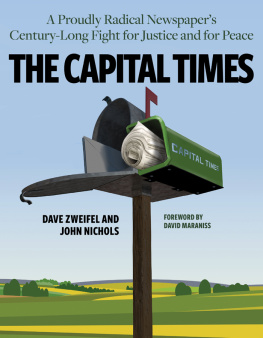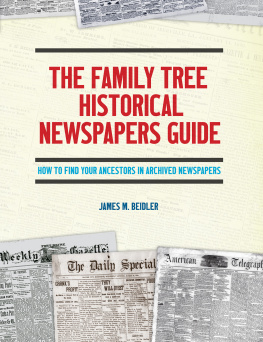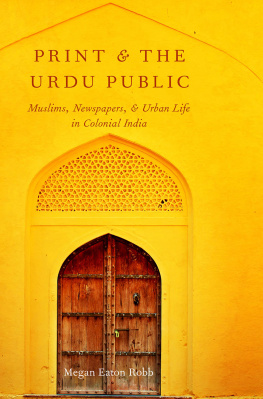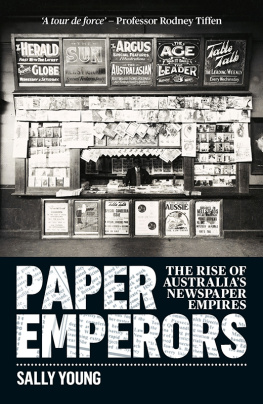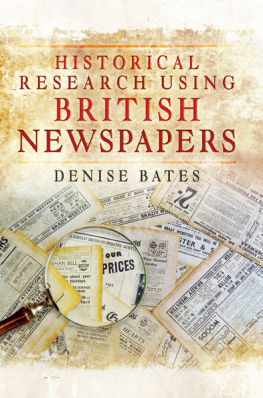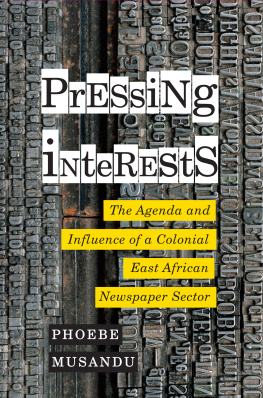
READ ALL ABOUT IT!
The history of the newspaper is a fascinating one, and newspapers have always played an important role in the lives of British people. More newspapers are bought per capita in Britain than almost anywhere else. This book traces the evolution of the newspaper, documenting its changing form, style and content as well as identifying the different roles ascribed to it by audiences, government and other social institutions.
Starting with the early seventeenth century, when the first prototype newspapers emerged, through Dr Johnson, the growth of the radical press in the early nineteenth century, the Northcliffe revolution in the early twentieth century, the newspapers wars of the 1930s and the rise of the tabloid in the 1970s, right up to Rupert Murdoch and the online revolution, Kevin Williams explores the impact of the newspaper on our lives and its role in British society.
Using lively and entertaining examples, Kevin Williams illustrates the changing form of the newspaper in its social, political, economic and cultural context. As well as telling the story of the newspaper, he explores key topics in detail, making this an ideal text for students of journalism and the British newspaper. Issues include:
- newspapers and social change
- the changing face of regional newspapers
- the impact of new technology
- development of reporting techniques
- forms of press regulation
Kevin Williams is Professor of Media and Communication Studies at Swansea University. He is author of Get Me a Murder a Day! A History of Mass Communication in Britain (1998), Understanding Media Theory (2003) and European Media Studies (2005).
READ ALL ABOUT IT!
A history of the British newspaper
Kevin Williams
First published 2010
by Routledge
2 Park Square, Milton Park, Abingdon, Oxon, OX14 4RN
Simultaneously published in the USA and Canada
by Routledge
270 Madison Ave, New York, NY 10016
Routledge is an imprint of the Taylor & Francis Group, an informa business
This edition published in the Taylor & Francis e-Library, 2009.
To purchase your own copy of this or any of Taylor&Francis or Routledges collection of thousands of eBooks please go to www.eBookstore.tandf.co.uk.
2010 Kevin Williams editorial selection and material
All rights reserved. No part of this book may be reprinted or reproduced or utilised in any form or by any electronic, mechanical, or other means, now known or hereafter invented, including photocopying and recording, or in any information storage or retrieval system, without permission in writing from the publishers.
British Library Cataloguing in Publication Data
A catalogue record for this book is available from the British Library
Library of Congress Cataloging in Publication Data
Williams, Kevin.
Read all about it! : a history of the British newspaper / Kevin Williams.
p. cm.
1. PressGreat BritainHistory. 2. English newspapersHistory. I. Title.
PN5114. W55 2009
072.09dc22
2009006219
ISBN 0-203-59689-7 Master e-book ISBN
ISBN 978-0-415-34623-8 (hbk)
ISBN 978-0-415-34624-5 (pbk)
ISBN 978-0-203-59689-0 (ebk)
FIGURES
Dawkss Newsletter, 3 August 1699
Weekly Newes from Italy, 30 May 1622
Answers to Correspondents, 2 June 1888
The Daily Illustrated Mirror, 25 January 1904
PREFACE
An exhaustive survey of how the newspaper has developed into a central cultural artefact in British society is probably impossible. There are simply too many newspapers in libraries and collections up and down the country and not enough time to read all of them. Hence the author has been dependent on secondary sources and all the potential diversions and distortions created by individual interpretations. This is, not surprisingly, sometimes problematic. One of the revelations of examining the content of a newspaper is that empirical study often counters theoretical elucidation. Jrgen Habermass influential study of the emergence of the public sphere in eighteenth-century Britain is constructed from secondary sources, most of which are in German. Constructing a theory based on such evidence is as much an act of the imagination as it is an examination of the available data. This book relies on secondary sources but where possible attention is drawn to the problematic nature of the evidence cited, as well as the difficulties of excavating the history of an ephemeral product which is not usually held in high regard. There is much dispute over the role, power and influence of particular newspapers in history but also over the basic facts, figures and even dates pertaining to their development. Who wrote what, when and why is often shrouded in mystery, particularly as for most of its history newspaper content has been compiled with no attribution to the author.
Simply reading the vast amount of material that survives would not be enough. To understand what appears in a newspaper it is also necessary to appreciate the broader organisational, social, political, economic and cultural context within which it is produced. An historian needs to be aware of the process by which newspapers were distributed and read, and the printing and reporting practices required to reproduce them, as well as social trends, geographical, financial and political factors, to say nothing of the particular biographies of editors, owners and journalists. The aim of the book is fairly basic to describe the evolution of the newspaper in Britain and identify some of the themes that run through this history. It is generally accepted that newspaper history is about the struggle to attain free speech and freedom of expressexpression. The dominant motif for understanding the historical development of newspapers is political freedom. Hence most newspaper history is political history, intimately entwined with the evolution of Parliament, democracy and the British political system. There is no doubt that for most of their history the political content of newspapers was considerable, waxing and waning with the issues of the day, but generally focussed on how political decisions are arrived at. However, newspapers have never been just about politics the multifaceted nature of their content, a characteristic which distinguishes them from other forms of printed news, illustrates their deep involvement with other parts of life and society. Newspapers have played their role in reflecting and initiating social and cultural change and acting as barometers for the societies they claim to report on. Their history incorporates the changing social, cultural and moral mores that govern society and the struggles that have surrounded them. The extent to which criticism has poured forth from intellectuals, moral entrepreneurs, social guardians and opinion formers of all shades emphasises the importance of newspapers in this respect. Newspaper history is therefore also social, cultural and moral history.
The history in this book has an overt bias it places emphasis on the continuities that appear in the historical development of the press in Britain. Many histories emphasise change; from the birth of the first newspapers through significant moments which have transformed the course of the newspapers development. Moments of change are important and must be highlighted, but the familiar debates, discussions and developments that run through the newspapers history are as appealing. At the centre of the story is a tension between commerce and social responsibility. Newspapers are businesses which need to sell a product to as many people as possible to make money. Most of those involved in the production of a newspaper printer, publisher, editor and reporter have been there in order to earn a salary, make a profit or finance a lifestyle. This has been a major ingredient in shaping what newspapers look like, their content and how they present the news, information and opinion they carry. However, newspapers have also aggregated to themselves another role, a role whereby they discharge their responsibility to society. Whether by providing a platform for debate or acting as a check on abuses of power or serving as guardians of propriety, they have sought to give the public what they need. Social responsibility has not always fitted comfortably alongside commercial imperatives and newspapers have grappled with the effort to balance these two obligations. Different eras have resolved the balancing act in different ways and the nature of the balance has varied from newspaper to newspaper. However, this struggle is at the heart of understanding how newspapers work.




